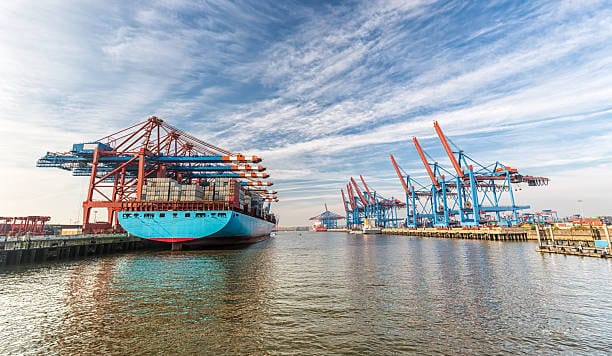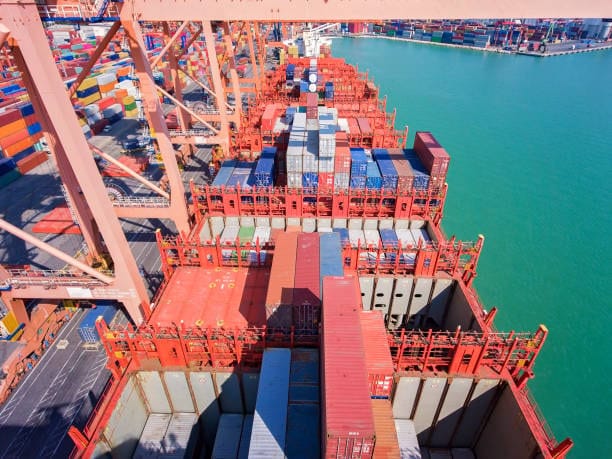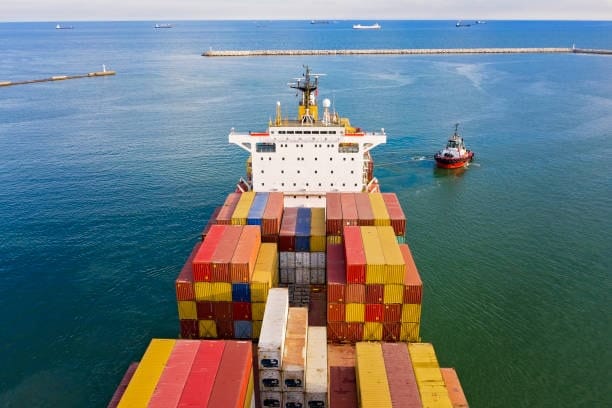Shipping goods from Germany to the USA is a vital link in the global trade network connecting two economic powerhouses with many years of trade. Germany’s manufacturing and innovation prowess makes Germany a leader in manufacturing and exports billions of dollars’ worth of goods to the United States, while the United States is Germany’s third largest trading partner. Cargo moving across the Atlantic between vehicles, pharmaceuticals, industrial machinery and consumer products is a complex but vital process for businesses and individuals.

The inner workings of looking to ship Germany to USA by sea, express delivery or by air give a bit of a better understanding to the costs, the time of delivery, and what you can do to avoid being stuck on a cargo ship or in customs for too long. This guide will take an in depth look into the ways to ship from Germany to USA, how much it will cost, how long it will take and the basics of customs.
Overview of Germany-USA Trade Relationship

The relations between Germany and the United States in trade are very strong and deep. Since 2022, Germany exported around $150 billion in goods to the USA, and bought back $70 billion. This exchange serves as a reminder for an efficient shipping options and solutions. These are automobiles, pharmaceuticals, industrial machinery and medical equipment, goods that are often very sensitive and require special handling and logistics. German businesses have a rich and profitable opportunity to branch out overseas, especially to a vast and wide variety of industries and consumers in the United States.

The two nations are geographically separate by the Atlantic Ocean so that shipping is a vital part of the economic partnership between the two. Whether it is a person sending a single package or a company shipping full container loads, it means a process with multiple stakeholders: freight forwarders, customs authorities and carriers that all work with each other to get goods to their point of destination. Success of these operations depend on the customs process and selection of shipping method, according to regulations and cost control.
Shipping Methods: Options for Germany to USA Shipping

The three main shipping modes to ship goods from Germany to the USA when freight is involved are: ocean freight, air freight and express delivery. It offers its pros and cons according to the characteristics of the goods, urgency, and constraints of budget.
Ocean Freight
For shipping the large volumes of goods from Germany to the USA, Ocean freight is the most common and economical way. The cargo ships leaving from prominent German hubs Hamburg, Bremerhaven, Bremen and making their way to the main US ports of New York, Los Angeles and Houston are used in this method. The ocean freight is in 2 categories – Full Container Load (FCL) and Less than Container Load (LCL).
- FCL: FCL shipping (reputation for high volume) uses renting out a whole container (often 20 or 40 feet long). It is a flat rate and therefore it is economical for the businesses that ship the heavy or bulky items like machinery and vehicles. Transit times vary from 16 – 33 days to the East Coast or to the West Coast.
- LCL: LCL means Less than container load where one piece of cargo is added to one container and shared by multiple shippers. FCL is usually cheaper than FCL for low volumes, but it will take longer due to consolidation and deconsolidation at both consignee and consignor location which is typically 43 to 47 days door to door.
Ocean freight is for non-urgent cargo with long shelf lives like industrial goods or furniture and the cost of shipping may not match time bound cargo requirements.
Air Freight
Cargo sent from German airports like Frankfurt or Munich to US hubs can travel via air freight, with the cargo taking less time to reach its destination in cities like New York (JFK), Los Angeles (LAX) or Chicago (ORD). The shipping process includes a delivery time from 1 to 16 days, most of the shipments arrive in 5–8 days. In the high value, low weight or perishable item, this is a great method.

The price for speed is, however. Ocean freight costs much less than air freight, about $4 to $7 per kilogram, whereas it takes $200 – $250 per cubic meter of space, and $4 to $7 per kilogram. A freight forwarder can choose air freight instead of bulk goods, to be a go to for time critical shipments, over urgency.
Express Delivery
The fastest way has to be express delivery, delivered by someone such as DHL, UPS or FedEx with transit times of 1 to 4 business days. This method does so, which uses Germany’s extensive logistics network: DHL’s headquarters are in Bonn, for example, and this might operate out of one of those. The $6 to $9 per kilogram price does reflect the premium service of door to door with robust tracking.
If you’re e-commerce business fulfilling customer orders or a individual sending a gift, then express shipping is ideal, but since its expensive, it is not suitable for huge amounts of freight. The reliability of reliable freight forwarders and speed make it an obvious favorite for the last dash OR value items that have to be attended to right away.
Factors Influencing Shipping Costs

Due to the fact that international shipping costs from Germany to the USA is very different depending on one factor, which gets very much in relation to another, minimizing the expenses becomes a complex task that needs to be considered on its own for each.
Weight and Volume
Price depends directly on the size and weight of the shipment. Container size (FCL) made of cubic metre (LCL) is the basis of ocean freight rates, whereas the air freight and express delivery are measured by kilogram. If the shipment will occupy more space than its ‘physical’ weight is suggesting, then this may also be based on volumetric weight (factoring in package dimensions).
Shipping Method
As mentioned, the rates are cheapest on ocean freight, then air freight and express delivery. For instance, the commercial invoice value would cost around $3,400 – $4,500 to ship 40 feet in a container by sea and as little as $400 – $700 to airfreight a 100 kilo shipment. A 5 kilogram package might be delivered for $30 to $45 in express delivery.
Seasonality
Rates tend to spike up during peak shipping seasons just before Thanksgiving and Christmas, which fall between mid-August to mid-October. Lower costs are typically seen in off peak periods, which are at the end of winter or early spring. And in booking in the last two weeks of a month, you can also get cheaper rates as carriers fill in the last of the vessel spots.

Distance and Ports
Transit time and cost depends on distance between origin and destination ports. Our Hamburg to New York (East Coast) riding is faster and cheaper than to Los Angeles (West Coast) as we take the shorter sea route or an added inland transport, respectively.
Additional Fees
Final bill can increase from customs duties, taxes, fuel surcharges, and handling fees; customs duties vary from 0 percent to 10 percent depending on the Harmonized System (HS) code assigned to goods, fuel surcharges are dependent on the state of self when global oil is high. Documenting properly with the help of a third party insurance agent helps with getting out of the portal of storage fees incurred in storage ports.
Customs and Documentation Requirements
U.S. customs navigation is a vital part of Germany to USA shipping. By ensuring customs clearance and making sure the goods are compliant, it helps clear the goods with ease and avoids spending costly delays or penalty.

Essential Documents
- Commercial Invoice: It is a documentation that specifies the goods and value to be transacted along with the transaction as commercial invoice serves for calculation of duty.
- Certificate of Origin: Verifies the origin of the goods (German origin), potentially allowing to benefit of trade agreement benefits.
- Bill of Lading (Sea) or Air Waybill (Air): Is a contract between shipper and carrier of the shipment journey. It serves as Bill of Lading (Sea) or Air Waybill (Air).
- Packing List: They require contents of, quantity, and packaging if for customs inspection.
- Safety Data Sheets (SDS): For hazardous materials, Safety data sheets (SDS) have to be provided outlining procedures for safe handling.
U.S. Customs Regulations
All imports must be declared to the U.S. Customs Service and duties are calculated on Cost Insurance and Freight (CIF) basis, adding goods’ value, shipping and insurance costs. Classifying products for tax purposes is HS codes, which are mandatory since March 2023 for EU exports. Obtaining an Employer Identification Number (EIN) or Customs Assigned Importer Number from US authorities is needed for importers to clear their goods.
Prohibited and Restricted Items
Some items are subject to restrictions or even bans outright. Firearms and explosives are prohibited and untanned hides, as well as pharmaceuticals or electronics with lithium batteries, may need special permits or packaging. It is ensured compliance by checking the U.S. Customs Service website or carrier guidelines.
Major Ports and Airports for Shipping
Both Germany and the USA have large logistics infrastructure assets which ensure the cheapest shipping options for fast delivery.
German Ports and Airports
- Hamburg: Germany’s largest port with Hamburg handling vast container traffic to the USA.
- Bremerhaven: A key hub for vehicle exports and container shipping.
- Frankfurt Airport: Europe’s busiest cargo airport, ideal for air freight.
- Munich Airport: A secondary hub for time-sensitive shipments.
U.S. Ports and Airports
- New York/New Jersey: The East Coast’s primary gateway, close to major markets.
- Los Angeles: The busiest port on the West Coast, between Asia and Europe.
- JFK Airport (New York): A major air cargo hub for rapid distribution.
- Houston: A growing port for industrial goods and energy-related shipments.
The hubs are seamlessly connected with carriers using carrier optimised routes based on garnered cargo type and destination.
Transit Times: What to Expect
Planning and customer expectations depend on method and route and transit times vary.
- Ocean Freight: These are 16 to 33 days port to port, which comes in at 43‒47 days door to door based on LCL due to consolidation. For example, New York is faster than Los Angeles.
- Air Freight: Average on air freight is 5 to 8 days for some shipments and 1 day from major airports.
- Express Delivery: 1 to 4 business days express delivery for the quickest turnaround for urgent needs.
Weather, customs holdups, peak season congestion all cause delays and it’s wise to allow for such delays so you don’t find yourself on a plane sitting on the tarmac for eight hours.
Cost-Saving Strategies for Germany to USA Shipping
With strategic planning, you will have a way to minimize the expenditures and still maintain the reliability.
- Ship Off-Peak: Mid-August to mid-October is ship off peak, as is any time other than peak season or late month periods, when rates decrease.
- Consolidate Shipments: In the case of LCL or express services, small packages can be consolidated into one shipment in order to reduce per unit cost.
- Compare Carriers: Search online freight calculators, and/or forwarders to compare rates from DHL, UPS, FedEx, or any sea freight carrier.
- Optimize Packaging: Reduce weight and volume to not have to pay volumetric penalties which is always a money saver.
- Negotiate Rates: For high-volume shippers, major carriers offer security discounts that can cut the price on premiums.
Challenges and Solutions in Germany to USA Shipping
Hurdle of shipping across the continents but tried and tested precaution acts as preventive measures.
Customs Delays:
Stalling clearance can be done due to the incomplete paperwork, misclassified goods, or something similar. Solution: Re-check documents and HS codes before sending.
Seasonal Disruptions:
When it comes down to it, transit slows at peak seasons or during snowstorms. Solution: Shipment plan early and forecast weather.
Cost Fluctuations:
Rate rises come unannounced due to fuel prices or demand spikes. Forwarder or book through stable periods.
Many logistical challenges are solved with technology such as visibility and control in response to technology – that is, tracking systems and digital freight platforms.
Conclusion
Shipping from Germany to the USA offers a gateway to a world’s largest market to that amount of opportunity and complexity. Ocean freight is cheap for bulk goods, air freight, quick for urgent items, and express delivery for small time sensitive items. The weight, method, and the timing of an international move determines how much it will cost and what the customs compliance demands shipping routes. Businesses and individuals can go about this much more efficiently if they are leveraging major ports, the strategies are being optimized and the future challenges are anticipated. Therefore, mastering Germany to USA shipping while ensuring competitive pricing is a competitive edge to global commerce as trade between these nations thrives shipping mode.




